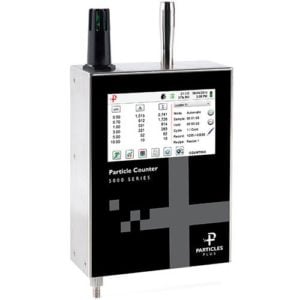Table of Contents
How do particulates and toxins in our air affect our health?
Even if you are healthy, you may experience temporary symptoms, such as:
- Irritation of the eyes, nose and throat
- Coughing
- Chest tightness
- Shortness of breath
Long-term exposure to particulate pollution can result in significant health problems including:
- Increased respiratory symptoms, such as irritation of the airways, coughing or difficulty breathing
- Decreased lung function
- Aggravated asthma
- Development of chronic respiratory disease in children
- Development of chronic bronchitis or chronic obstructive lung disease
- Irregular heartbeat
- Nonfatal heart attacks
- Premature death in people with heart or lung disease, including death from lung cancer
The smallest particles often produce the most invasive health effects, as these particles traverse large distances and cannot be filtered by our respiratory systems. These factors have led the World Health Organization to classify PM2.5 as a cancer risk.
“PM with a general diameter of 10 μm and smaller, which is termed PM10, can cause serious health problems because it can become lodged deep in the lungs and even enter the bloodstream. PM2.5, which represents particles with a diameter of 2.5 μm or smaller, has been declared a cause of cancer by the WHO.”
Nature.com
Particulate Matter – What is it and how does it affect our health?
Why Is Understanding Pollution and Air Quality Challenging?
Until the recent decades’ development of satellite monitoring technology, scientists had yet to correlate population size to pollution levels. Smog, in fact, is not only visible in many cities at ground level, but also from outer space.
Adversely Affected and Aging Populations
Despite visual intuition, proximity, density, work sectors, and aging population often skew regional differences in pollution-related ailments and premature deaths. Naturally aging populations complicate the test methodologies when forming baselines of premature deaths, adverse health outcomes, and the overall pollution levels. Aging populations can negative expected reductions in overall health levels despite tangible improvements in air quality.
Size and Characterization
The form and size of particulate pollution smallest particles have consequences much harder to measure and correlate with health effects. Previously, we’ve examined how new technologies such as airborne particles and VOCs create by 3D printers, how particulates affect our health, and risk factors associated with indoor C02 levels.
“When the NYC and LA Analyses are taken together, however, they underscore the important point that cities differ markedly in their local exposure conditions and emphasize the variable importance of the contributions of local sources to the overall risk of mortality associated with PM2.5 exposure. These divergent results argue for caution in extrapolating from such studies in any one metropolitan area to other areas….The unique composition and characterization of chemical and aerosol pollution requires contrast, definition, and risk assessment.”
“No single study can be the basis for accepting the existence of a causal relationship between air pollution and mortality.”
Particulate Matter [PM] [PM 10] [PM2.5]
“Particulate matter (PM) is a mixture of solid and liquid particles in air and forms a significant form of air pollution. PM sources include, for example, direct emission from a source, such as a construction site, smokestack, or fire, or a result of complex chemical reactions emitted from power plants, industrial production and automobiles.”
The EPA characterizes particulate matter into two high-risk parameters, generally associated with the size of the particle.
Particulate Matter (PM10) Particulate matter with a mean diameter of 10 microns or less (PM10) is emitted from transportation and industrial sources. Exposure to particle pollution is linked to a variety of significant health problems ranging from aggravated asthma to premature death in people with heart and lung disease.
Fine Particulate Matter (PM2.5) Fine particulate matter with a diameter of 2.5 microns or less (PM2.5) is created primarily from industrial processes and fuel combustion. These particles are breathed deeply into the lungs. Exposure to particle pollution is linked to a variety of significant health problems ranging from aggravated asthma to premature death in people with heart and lung disease.
Ozone, C02, VOCS, & Oxides
Aggressively studied pollutants, such as Ozone (O3), are not directly emitted into the atmosphere, but instead formed as pollutants react and combine. Ozone, in fact, is a photochemical smog, created when VOCs and oxides of nitrogen interact with heat and sunlight. Ozone is irritative of the upper respiratory system and causes damage to crops and ecosystems.
“Disentangling the specific air pollutants—and clearly attributing them to a specific health or environmental outcome—can be complex since some pollutants act as precursors to others. For example, SO2 and NOx can react in the Earth’s atmosphere to form particulate matter (PM) compounds.” – Our World in Data
We also see the consequences of pollution within our natural ecosystems and whether patterns.
“Human activities can influence the carbon cycle by adding more CO2 to the atmosphere and by influencing the ability of natural sinks, like forests, to remove CO2 from the atmosphere. The main human activity that emits CO2 is the combustion of fossil fuels like coal, natural gas, and oil used for energy and transportation.”
Researchers show immense interest in the ways in which small particles increase presumptively unrelated aspects of health hazards, for example antimicrobial resistance.
This 2019 study from the Chinese Department of Environmental Science and Engineering provides evidence that PM 2.5 provides a vector for the transfer of antimicrobial resistance, E. coli strains, and altered gene expression.
Air Quality Monitoring Systems Have Never Been More Important
Within manufacturing, industrial, or cleanroom areas, air quality management systems provide safety measures for both people and products. Technically, Indoor Air Quality (IAQ) refers to the air quality within and around buildings and structures, especially as it relates to the health and comfort of building occupants. However, air quality also essential for the production of extremely sensitive devices, such as wafer chips and microelectronics.
In the last decade these “smart” air quality devices have made their way to manufacturing floors, healthcare centers, and cleanrooms. In some cases, a series of wirelessly connected devices may replace thousands of individual sensors and miles of cables and wiring. Instead of mulling over screens and reports in a master control room, operators can now seamlessly review, monitor, graph, and make annotations out in the field.
Integrating Remote Particle Counters to IOT (The-Internet-of-Things)
The Internet-of-things (IOT) is a series of internet connected air quality monitors that aggregate disparate inputs or sensors from many sources, whether across the room or across the globe. These tasks seemed largely impossible in decades previous.
Today, local communication links such as Bluetooth, Zigbee, JSON, and other communication links provide onboard capabilities for syncing environmental monitoring and testing tools with Cloud connections. These particulate and air quality sensors are now available in handheld and remote units with empower real-time adjustment, remote monitoring, and data visualization.
What We Like About Smart Features from Particles Plus
Local communication protocols such as Bluetooth, Zigbee, JSON, and other communication links provide onboard capabilities for syncing environmental monitoring and testing tools with Cloud connections. These particulate and air quality sensors are now available in handheld and remote units which are controlled from web browsers or on-board display. Learn more about how these particle counters allow real-time adjustment, remote monitoring, and data visualization.
Related Posts
-
Particulate Matter - What is it and what are the health effects?
Historically, air quality has shown a complex relation to respiratory issues, birth defects, chronic illness, cancer, and even loss of cognitive function. Research suggests air pollution affects everything from neurodevelopment in-utero to cognitive decline in…
-
3D Printing Fume Extractors for Odors and Particles
Does a HEPA filter capture ultrafine particles (UFPs). What toxins does 3D printing produce? Why should every 3D printer have both a activated carbon and HEPA filter?
-
BOFA Fume Extractors for 3D Printing
3D printers are known to produce a number of byproducts during operation. Common 3D printing filaments such as ABS and PLA are known as high emitters of ultra-fine particulates (UFPs), while nylon and PCTPE are…








